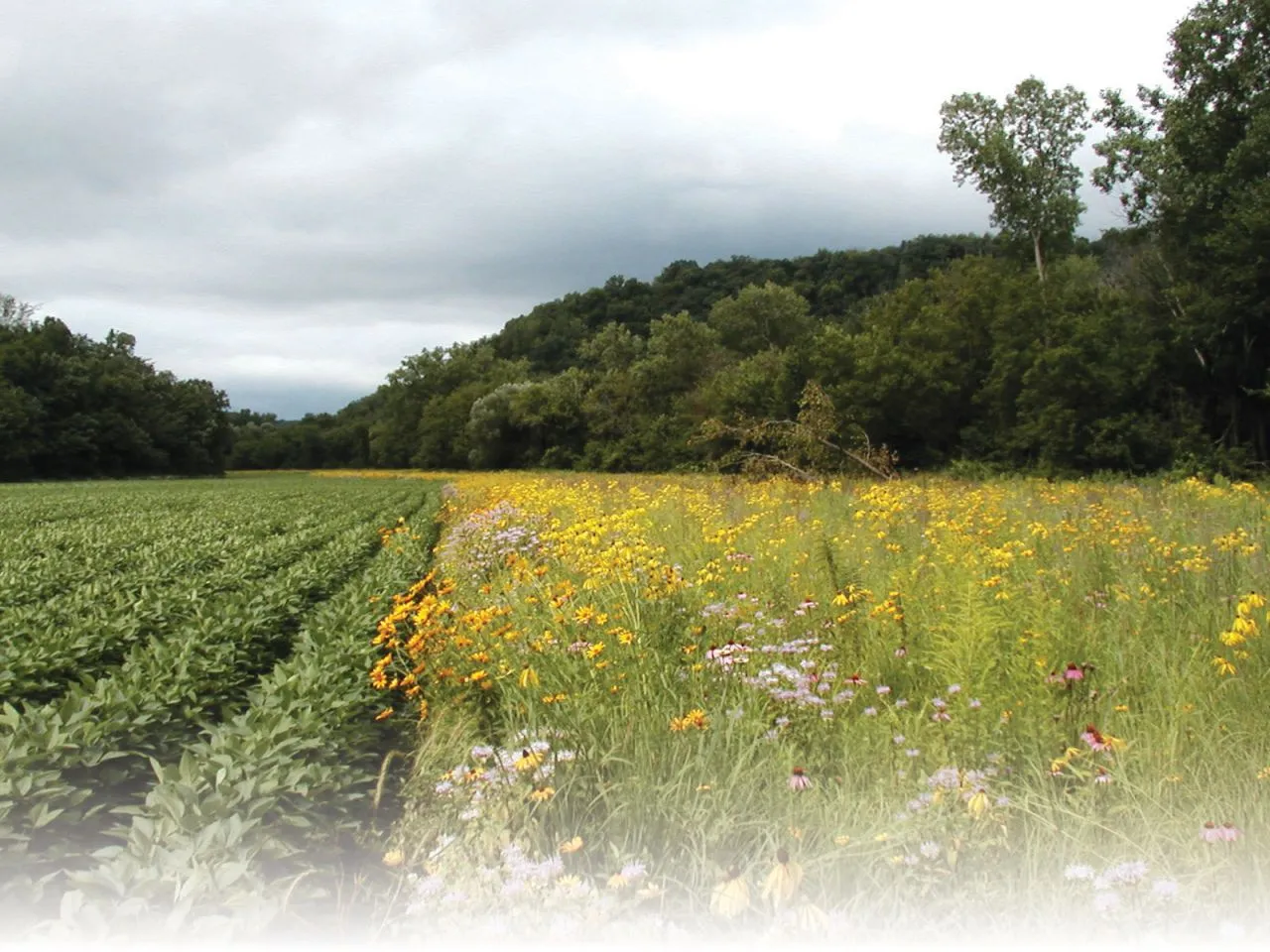Fund Your Local Project
Fishers & Farmers Partnership Seeks Proposals | 2023 Funding Cycle
Deadline February 1, 2023
Fishers & Farmers Partnership for the Upper Mississippi River Basin (FFP), a fish habitat partnership, is seeking project proposals to benefit aquatic habitat in Upper Mississippi River basin streams. Federal funding may be available under the National Fish Habitat Partnership through the U.S. Fish and Wildlife Service to fund the top ranked proposals.
About the Program:
Fishers & Farmers Partnership for the Upper Mississippi River Basin is a self-directed group of non-governmental agricultural and conservation organizations, tribal organizations and state and federal agencies united to add value to farms while protecting, restoring, and enhancing the 30,700 miles of streams and rivers of the Upper Mississippi River Basin. Projects funded will align with the Fishers & Farmers Strategic Plan.
Fishers and Farmers Partnership is a member of the National Fish Habitat Partnership.
We support the National Fish Habitat Partnership’s Goals:
• Protect & maintain intact and healthy aquatic systems
• Prevent further degradation of fish habitats
• Reverse declines in quality & quantity of aquatic habitats to improve health of fish/aquatic species
• Increase quality of fish habitat to support a broad natural diversity of fish/aquatic species
Fishers & Farmers Partnership’s Goals:
• Engage Farmers & Ranchers
• Support Fish Habitat Conservation Projects
• Continue Development of Long-Term Basin Scale Strategies
• Strengthen the Organization for Long-Term Action
Fishers & Farmers Partnership’s Vision:
The Partnership’s vision of the future is one in which landowners work together with conservationists and scientists to address the needs of their own farms, local streams, and the fishes of the basin. Lessons learned are shared with neighbors, participating organizations, and others outside of the basin. Fish populations and habitats are monitored at project sites and downstream. The Partnership helps landowners showcase successful practices to neighbors and others. With a focus on mutual respect, dialog is cultivated between agricultural and environmental organizations throughout the Upper Mississippi River Basin. This leads to better use of resources, less duplication of effort, and measurable progress toward common goals.
Our Mission:
The mission of the Fishers & Farmers Partnership is to support locally-led conservation projects that add value to farms while restoring aquatic habitat and native fish populations.
Priorities For FFP:
• Increase native fish/mussel populations – Focal fish/mussel species: smallmouth bass, Topeka shiner, American brook lamprey, blacknose dace, black redhorse, blackside darter, brook/brown trout, channel catfish, hornyhead chub, southern redbelly dace, Higgins’ eye mussel, pink mucket, scaleshell, spectaclecase
• Improve instream habitat
• Work with farmers/landowners to protect/maintain healthy aquatic systems, or prevent further degradation
• Increase landowner engagement/farmer-led committees that drive conservation
• Reduce sedimentation, phosphorus and nitrogen runoff to stream habitats
• Improve floodplain habitat, enhance flow regimes, improve connectivity
• Promote best management practices across the landscape
• Monitor effectiveness of conservation projects, then share our stories through outreach
Funding Amount:
Funding floor $15,000
FFP receives approximately $100-$230K, split among 4-5 successful projects.
Cost Sharing By Partners:
USFWS requires at least a 1:1 cost share, 3:1 is best. Cost share may be in-kind services such as time or cash. Cost share may include monitoring, farmer’s time with project maintenance.
Applicant Eligibility:
Applicants can be tribal, federal, state, county, and non-government organizations in either natural resources or agriculture with the ultimate goal of adding value to farms while restoring aquatic habitat and native fish populations. Managers and supervisors responsible for implementing fish habitat projects must document compliance with all applicable Federal laws and regulations (e.g. National Environmental Policy Act, Endangered Species Act, Clean Water Act, National Historic Preservation Act, Rivers and Harbors Act). Fish habitat projects must also comply with any applicable state, local and tribal laws and regulations that do not conflict with, or are not preempted by, federal laws and regulations.
Expenditures of NFHP funds are appropriate for the following actions/activities:
• Time spent for project planning, directing project activities (e.g., earthwork, fence installation), site assessments, travel to and from project, and project oversight.
• Equipment (monitoring equipment, not farming equipment).
• Earthwork (e.g., contracts for earth moving, planting, structure installation, other site preparation), materials (e.g. rock, gravel, plants and planting supplies, materials to construct habitat structures).
• Short-term monitoring/evaluation. Funds may be used for pre-post project monitoring of NFHP projects to evaluate biological and/or physical response to project activities.
• Outreach to advance conservation. Engaging farmers/landowners in farmer-led efforts, workshops/training.
• The ACE Act allows a state, local government, or other non-federal entity to receive NFHP funds for the acquisition of real property from willing sellers if the acquisition ensures public access for fish and wildlife-dependent recreation or contributes a scientifically based, direct enhancement to the health of fish and fish populations as determined by the NFHP Board. All real property acquisition projects funded with NFHP funds must be approved by the state agency in the state in which the
project is occurring. Please contact FFP’s Coordinator if you have a project request that includes real property
acquisition.
The following activities are not eligible for NFHP funding:
• Actions required by existing Federal or State regulatory programs. Fish habitat expenditures shall be in addition to, not in lieu of, other expenditures authorized or required from other entities under other agreements or provisions of law.
• Land use incentive payments to landowners.
• Pre-award costs such as preliminary design, surveys, and appraisals.
• Operation, maintenance of facilities, structures, other construction.
General Requirements
Project Duration:
Work is to be completed within 18 months
Terms of Funding:
Funding must be spent within 24 months
Projects must include monitoring, or evaluation measures and an outreach/education component
Priority Habitat:
Outside Driftless Area (DA), but DA projects will be considered
Application Method/Submittal:
Project proposal form: Fishers & Farmers Project Proposal Template
Timeline:
November 2021 | Develop project proposals for National Fish Habitat Partnership funding consideration
February 1 2022 | Application/Proposal Deadline
February/March 2022 | Projects will be evaluated/ranked by FFP Steering Committee
March 2022 | FFP provides priority project list to NFHP Board
April/June 2022 | NFHP Board reviews projects
July/September 2022 | Department of Interior Review
January 2023 | Announcement of awards to recipients
April/March 2023 | Agreements written/funding awarded
Ranking Criteria:
• Measurable Goals/Priorities: FWS, NFHP, FFP, Partners
• State Wildlife Action Plans
• Fish species (see list above)
• Priority areas – watersheds, COAs, etc.
• Habitat issues: connectivity, climate change, sediment/nutrients
• Addresses root cause of problem within watershed
• Conservation actions produce desired outcomes, goals, obj.
• Project follows design, collaborates with multiple farmers/partners in watershed
• Improves farmer-led committee/actions
• Outlines anticipated benefits to larger restoration focus area
• Explains pre/post project evaluation/monitoring (required)
• Life expectancy – goals sustainable
• Enhances farms and fish habitat
• Leverages maximum matching funds, cost-sharing
• Reasonable budget
• Has attended a Watershed Leaders Network Workshop
Priority Watersheds:
Illinois – Galena River Watershed, Indian Creek – Vermillion River, Hutchins Creek
Iowa – Boone Watershed, Rock Creek
Minnesota – Seven Mile Creek – Minnesota River, Cannon River Watershed, Root River
Missouri – Shoal Creek, Bourbeuse-Meramec, Peno Creek – Salt River, Spring Creek – Chariton River
Wisconsin – Bad Axe, Kickapoo River, Red Cedar
(These watersheds receive priority, but other watersheds will be considered.)
Please address questions to:
Heidi Keuler
US Fish and Wildlife Service
555 Lester Avenue Onalaska, WI 54650
Heidi_Keuler@fws.gov
608-783-8417


